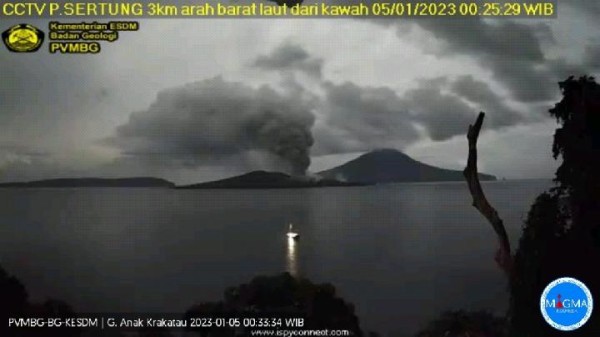Kamis 05-Jan-2023 13:35 WIB
455

Foto : tempo
brominemedia.com - The eruption of Mount Anak
Krakatau, or Child of Krakatoa on January 4, according to the Volcanology and
Geological Disaster Mitigation Center (PVMBG), is part of the volcanic
mountain’s mechanism in forming itself again after half of it ruptured in the
December 2018 eruption, which triggered a destructive tsunami.
Authorities have put in place a Level 3 Alert status that establishes a 5-kilometer radius ‘danger zone.’

“Outside of that area, people can still conduct their daily activities,” said PVMBG coordinator of volcanic mountains Oktory Prambada on January 5.
As the Child of Krakatoa naturally forms its shape, Prambada warned that the danger that continues to exist is the lava and series of smaller eruptions. “Since 2019 there have been lava flows that eventually form the new mountain shape,” he added.
The January 4th eruption produced ash clouds that reached a height of three kilometers above sea level, which according to him, is mainly due to a blockage under the mountain’s crater that caused an overpressure.
Citing the Magma Indonesia website which is managed by the Geological Agency, the eruption of Mount Anak Krakatau occurred again on Thursday morning, at 00:13 WIB (Western Indonesian Time). The height of the column of ash was observed to be approximately 750 meters above the mountain peak.
Konten Terkait
The eruption of Mount Anak Krakatau is part of the volcanic mountain's mechanism in forming itself again following the 2018 major eruption.
Kamis 05-Jan-2023 13:35 WIB






